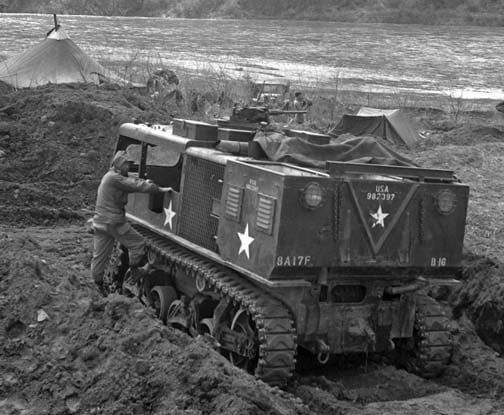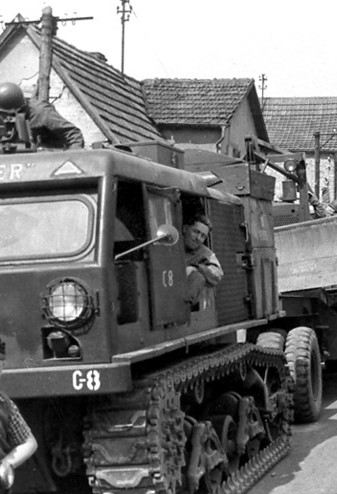The United States had some of the best artillery in the world at the time of the Second World War. However, with the rapid nature of mechanized warfare, these guns would be useless if they could not keep pace with the rest of the army in order to provide fire support. In order to make sure the Field Artillery Branch was not left behind, the M4 High Speed Tractor (HST) was introduced.

Approved for service in 1942, the M4 HST was designed by the Allis-Chalmers Corporation, who had experience building agricultural tractors before the war. The M4 HST was built on the chassis of the M2 Light Tank and was used as the main prime mover for the heavy guns of the U.S. Army. Able to tow the 90mm Gun M1 anti-aircraft weapon, the 155mm Gun M1 “Long Tom” or the 8 Inch Howitzer M1, the M4 HST was a versatile and powerful vehicle.

Alongside the gun it was towing, the M4 HST would carry its driver, a gun crew of eleven men, and ammunition for the gun stored in bustle bins on the rear of the vehicle. Though not expected to partake in direct combat, like all American vehicles at the time it was armed with a .50 M2 anti-aircraft machine gun for self-defense purposes. Thanks to its light weight of 18 tons, the M4 HST could achieve a top road speed of around 35 miles per hour.

The M4 HST was built on the chassis of the M2 Light Tank and was used as the main prime mover for the heavy guns of the U.S. Army.
In addition to the base M4 model, there were two variants; the M4C which decreased the size of the gun crew compartment in order to fit more ammunition racks, and the M4A1, which had wider tracks and suspension, increasing its floatation and making it exert less pressure on the ground.
The Museum of American Armor’s M4 HST comes to us from the estate of the late Kevin Kronlund.




